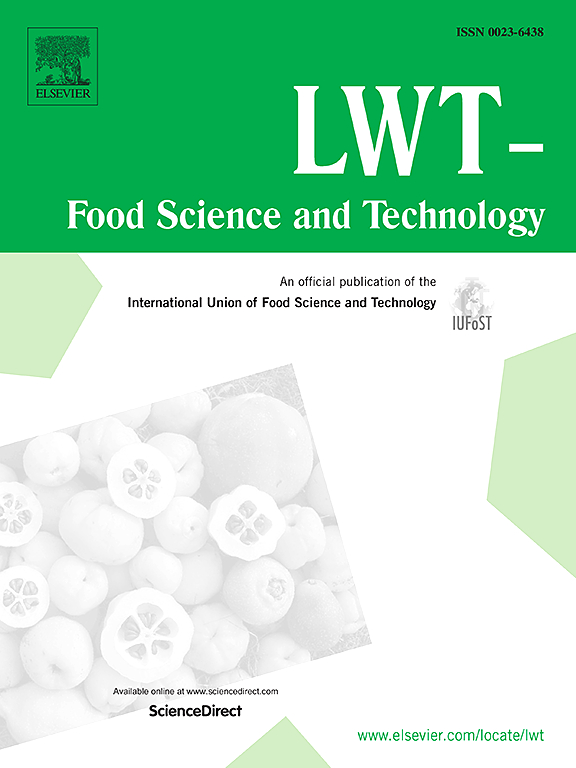从热变性中间态聚集体到凝胶网络的形成:大豆蛋白馏分反应过程的热力学和动力学分析
IF 6
1区 农林科学
Q1 FOOD SCIENCE & TECHNOLOGY
引用次数: 0
摘要
本研究从蛋白的荧光结构、粒径分布、流变学变化和胶凝反应的自由能等方面研究大豆蛋白β-甘氨酸(7S)和球蛋白(11S)的热聚集,以及葡萄糖-δ-内酯(GDL)诱导胶凝过程中的热力学和动力学行为。结果表明,大豆蛋白11S的热变性与7S不同,表现出多种中间状态,并形成多个团聚体。当7S和11S共存时,它们的相互作用导致11S-7S聚集体的形成。与单独由11S或7S形成的聚集体类似,11S-7S聚集体的胶凝过程遵循时间-温度叠加原理。然而,11S-7S聚集体的凝胶化始终比11S和7S聚集体的混合物发生得更早。11S-7S聚集体表现出更接近11S凝胶的凝胶化模式,其中熵起主导作用(ΔH∗<-TavΔS∗),而含有7S或11S聚集体混合物的体系的凝胶化主要是焓驱动的。这些发现为大豆蛋白系统凝胶化过程中不同聚集体的作用和机制提供了基于能量的解释,为调节大豆蛋白产品的加工质量提供了见解。本文章由计算机程序翻译,如有差异,请以英文原文为准。
From thermodenatured intermediate state aggregates to gel network formation: Thermodynamic and kinetic analysis of the reaction process of soybean protein fraction
This study focused on protein fluorescence structure, particle size distribution, rheological changes, and the free energy of gelation reactions to investigate the thermal aggregation of β-conglycinin (7S) and globulin (11S) soybean proteins, as well as their thermodynamic and kinetic behavior during gelation induced by glucono-δ-lactone (GDL). The results indicate that the thermal denaturation of soybean protein 11S differs from that of 7S, exhibiting a variety of intermediate states and leading to the formation of multiple aggregates. When 7S and 11S coexist, their interactions lead to the formation of 11S-7S aggregates. Similar to aggregates formed by 11S or 7S alone, the gelation process of 11S-7S aggregates follows the time-temperature superposition principle. However, the gelation of 11S-7S aggregates consistently occurs earlier than that of mixtures of 11S and 7S aggregates. The 11S-7S aggregates exhibit a gelation pattern closer to that of 11S gels, where entropy plays a dominant role (ΔH∗<-TavΔS∗), while the gelation of systems containing mixtures of 7S or 11S aggregates is primarily enthalpy-driven. These findings provide an energy-based explanation for the roles and mechanisms of different aggregates during the gelation of soybean protein systems, offering insights for regulating the processing quality of soy protein products.
求助全文
通过发布文献求助,成功后即可免费获取论文全文。
去求助
来源期刊

LWT - Food Science and Technology
工程技术-食品科技
CiteScore
11.80
自引率
6.70%
发文量
1724
审稿时长
65 days
期刊介绍:
LWT - Food Science and Technology is an international journal that publishes innovative papers in the fields of food chemistry, biochemistry, microbiology, technology and nutrition. The work described should be innovative either in the approach or in the methods used. The significance of the results either for the science community or for the food industry must also be specified. Contributions written in English are welcomed in the form of review articles, short reviews, research papers, and research notes. Papers featuring animal trials and cell cultures are outside the scope of the journal and will not be considered for publication.
 求助内容:
求助内容: 应助结果提醒方式:
应助结果提醒方式:


